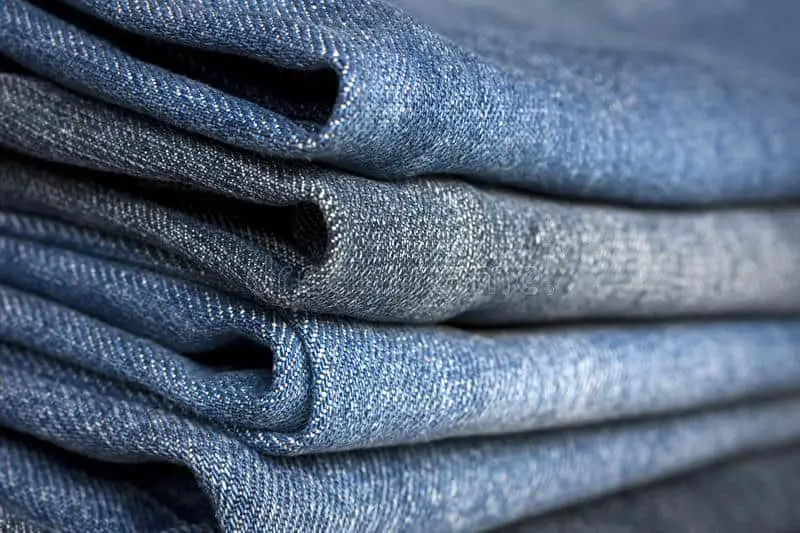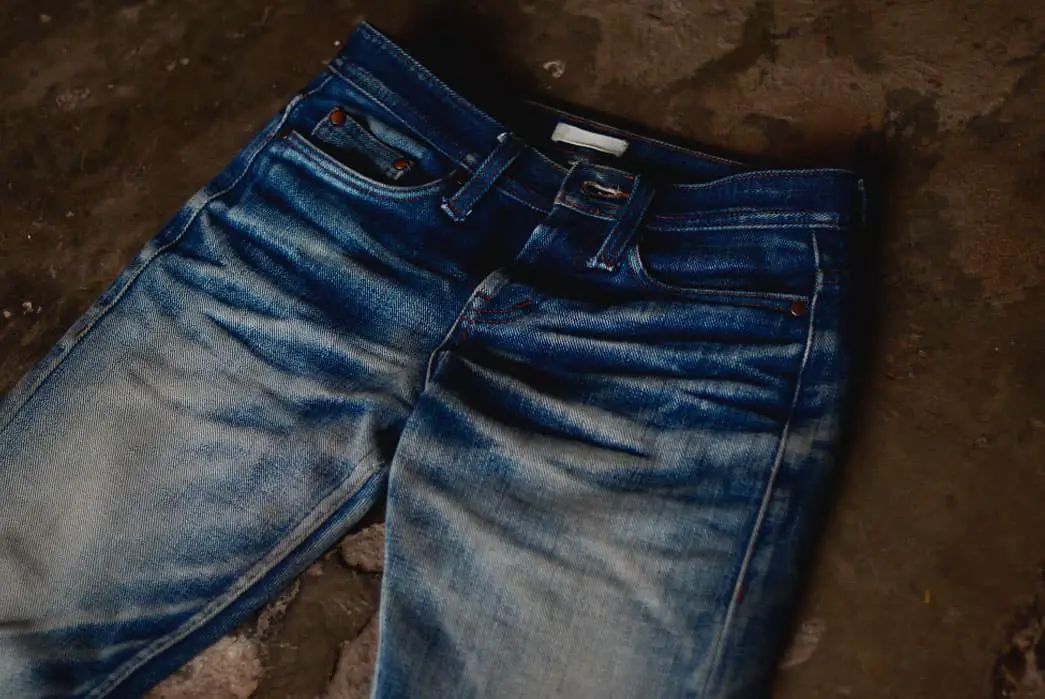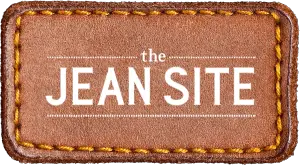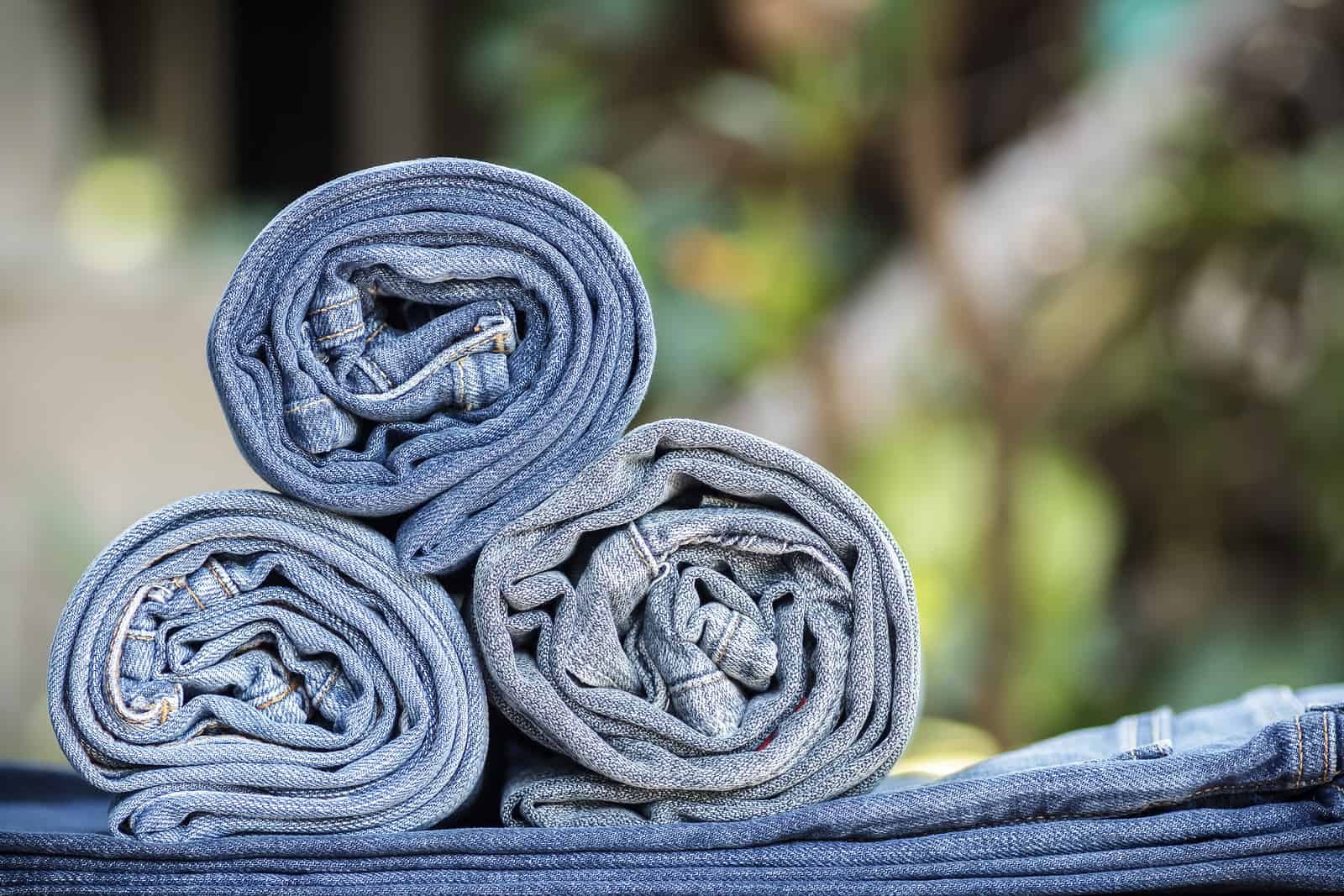Table of Contents
*This post may contain affiliate links. As an Amazon Associate we earn from qualifying purchases.
Purchasing raw denim jeans can be a complicated process if you don’t know what you are doing.
Raw denim is different than the usual denim you see in stores. It’s like it’s made out of a different material. To the point that you may think, “what are jeans made of”? It takes a while to break in raw jeans.
Because raw jeans are different than regular jeans. The size, care, and color are all different than what you may expect. But the process can be easier if you know some of the proper terms.
13 Terms You Should Know
1. Selvedge
Selvedge is term describing the finished edge of the denim fabric that keeps it from unraveling. It’s a “self-edge” which is where the term comes from. It can look like a white stripe on the inner cuff with a red stitch running through it.
The selvedge is also a sign of old school construction of denim. This is how they were made before companies looked for ways to cut costs and started changing how the jeans were made.
 The new way they made it didn’t have a finished edge, leaving it to possibly unravel. This doesn’t mean that jeans without selvedge are bad, just made differently.
The new way they made it didn’t have a finished edge, leaving it to possibly unravel. This doesn’t mean that jeans without selvedge are bad, just made differently.
2. Raw
This is a term referring to how the denim isn’t washed after being dyed. This is why it can also be referred to as dry.
Because the dye isn’t treated it will wear away from the jeans at certain stress points as their worn. This gives you the chance to customize them by wearing them often. People prefer this style of denim because of this.
Though raw denim has its own problems, as mentioned before it can take a while to break them. This means they will be stiff and not soft like commercial jeans are from the get go.
3. Warp
This term is talking about the vertical yarns of woven cloth. When they’re dyed, it gives a pair of jeans their color.
4. Weft
This is the horizontal yarn that’s woven through the warp to create cloth. It’s usually white as opposed to the dyed warp threads. Together they create the denim fabric.
5. Weight
This means the heaviness of a square yard of any piece of denim. This means both its density and weight of the yards. Most raw denim weighs in around 14 ounces, though of course there are lighter and heavier versions.
6. Blowout
This is a tear at the crotch as a result of stress on the fabric. This area is the one that gets the most daily stress from walking around and other activities.
You can also get blowouts from not washing your raw denim. Small bits of coarse dirt can get trapped and slowly erode the material.
7. HoneyComb
This is a fade pattern that develops behind the knee of a well-worn pair of jeans. This happens due to repeated knee bending.
8. Whisker
 This refers to horizontal fade lines on the upper thigh and waist on jeans. This comes from the bunching up of the denim fabric when you sit.
This refers to horizontal fade lines on the upper thigh and waist on jeans. This comes from the bunching up of the denim fabric when you sit.
9. Sanforized
This refers to the act of the fabric being stretched or shrunk and then readjusted before production. This is how a lot of commercial jeans come when you buy them in stores, unlike raw denim which stretches with wear.
By not getting sanforized, the denim definition of raw jeans is more striking.
10. Slub
This is talking about when yarns are wider in certain spots, it can make the fabric feel uneven. It will create sharp fades though.
11. Stretch
This talks about how far a pair of jeans can stretch. Some denim is woven with a small amount of spandex and other stretchy material to make jeans more comfortable.
This is usually reserved for skinny jeans, because let’s be honest, we all need a little stretch with those.
12. Arcuate
This is the pattern of stitching on the back pockets of jeans. It’s really more decorative than functional, it’s also used as a branding element.
13. Bartacks
These are reinforced stitches that replaced rivets on the back pockets. It makes a little more comfortable to sit on.
Now You Know all the Terms – So You Can Make an Educated Decision
Hopefully, you will feel more comfortable picking out a pair of raw jeans of your own.
Because they can be pricey, keep in mind these terms so you know you picked the right one. If you want to learn more, there are plenty of websites, like Highsnobiety that have a great how to guides.
If you, after reading this, decide that raw jeans aren’t for you, that’s fine. Commercial jeans are perfectly good too. It’s all about opinions and what each individual wants.


